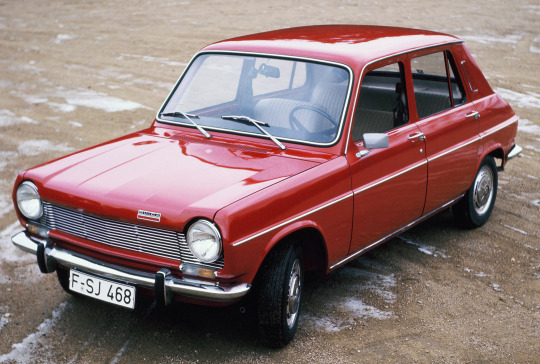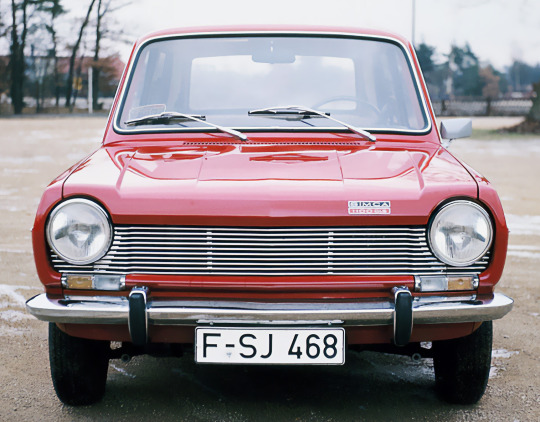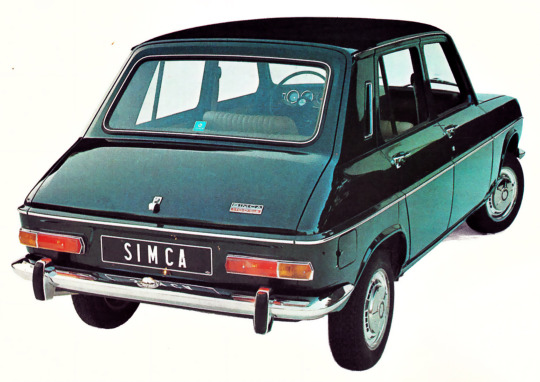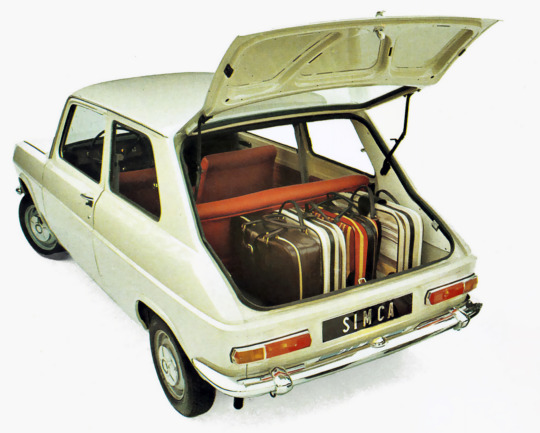#drive in europe
Text
Why Europe Should Consider Hiring More Blue-Collar Workers from India ?
In recent years, Europe has faced a significant challenge in its labor market – a shortage of skilled blue-collar workers. This shortage is impacting various sectors, including manufacturing, construction, and healthcare, leading to a growing recognition that Europe must look beyond its borders to address this gap. India, with its vast and diverse workforce, presents an ideal solution to this problem. Here’s why Europe should seriously consider hiring more blue-collar workers from India.

1. Demographic Advantage and Workforce Size
India's demographic profile is a primary reason for Europe to consider its workforce for filling blue-collar jobs. With over 1.3 billion people, India has one of the largest workforces in the world, with a significant portion skilled in various blue-collar professions. Moreover, India has a relatively young population, with a median age of around 28 years, compared to Europe's aging population. This youthful workforce is not just abundant but is also continually replenished, ensuring a sustained supply of labor.

2. Skill Diversity and Specialization
Indian blue-collar workers offer a wide range of skills and specializations. From traditional sectors like agriculture and textiles to more modern industries such as information technology and healthcare, Indian workers have a diverse set of skills. This diversity is bolstered by various vocational training programs and technical institutes across India that prepare workers for the global market. European industries, facing a dearth of specific skills, can benefit immensely from this diverse talent pool.

3. Economic Benefits
Hiring blue-collar workers from India can be economically advantageous for European countries. The cost of labor in India is generally lower than in Europe, allowing European companies to manage their labor costs more effectively. Additionally, the influx of foreign workers can stimulate local economies through consumption and taxes, contributing to the economic health of host countries.

4. Cultural and Linguistic Adaptability
Indian workers are known for their adaptability to different cultural and linguistic environments. English, being one of the official languages in India, is widely spoken and understood by a significant portion of its population. This linguistic advantage makes it easier for Indian workers to integrate into English-speaking countries and adapt to workplaces where English is the primary language of communication.

5. Bilateral Relations and Diplomatic Ties
Strengthening ties between India and European countries through labor exchange can have positive diplomatic repercussions. It fosters mutual understanding, cultural exchange, and stronger economic and political relationships. These improved relations can lead to more significant collaborations and partnerships, benefiting both regions in various sectors.

6. Addressing Labor Market Imbalances
Europe's labor market is facing imbalances due to an aging population and declining birth rates. These demographic challenges result in a shortage of workers in certain sectors, particularly blue-collar jobs. Indian workers can help fill these gaps, ensuring that essential industries continue to operate efficiently.

7. Technological Adaptability and Digital Skills
Indian workers, especially the younger generation, are increasingly tech-savvy and adaptable to new technologies. With the rapid digital transformation of various industries, having a workforce that is quick to adapt and comfortable with technology is a significant advantage.

8. Positive Social Impact
Hiring blue-collar workers from abroad, including India, can have a positive social impact. It promotes diversity and multiculturalism in the workplace, enhancing social cohesion and understanding. Workers from different backgrounds bring new perspectives, ideas, and ways of working, which can lead to innovation and improved problem-solving.

9. Reducing Skill Shortages and Enhancing Productivity
By employing skilled blue-collar workers from India, European companies can reduce skill shortages, leading to increased productivity and competitiveness. A diverse and skilled workforce can drive innovation, improve service delivery, and enhance the overall quality of work.

10. Strengthening Global Supply Chains
The integration of Indian workers into the European workforce can strengthen global supply chains. India's strategic location and its role in various global supply networks make its workforce knowledgeable about international trade and logistics, benefiting European businesses engaged in global markets.
Conclusion
The hiring of blue-collar workers from India offers a comprehensive solution to Europe's labor shortages. It's a win-win situation: Europe gets access to a skilled, diverse, and adaptable workforce, while Indian workers gain international exposure and opportunities for economic advancement. Such a collaboration would not only address immediate labor needs but also foster long-term socio-economic and diplomatic relations between Europe and India. India based International companies like Skillbee has helped more than thousands of blue collar workers to work and settle in abroad. Starting from their basic paper works to visa, Skillbee like companies are helping these unpolished gems of to find a better future.
#blue collar worker#trailer driver jobs in europe#blue collar jobs in europe#drive in europe#jobs in europe
1 note
·
View note
Photo

New/Learning driver signs/stickers in Europe
Source: https://en.m.wikipedia.org/wiki/Newly_licensed_driver_plate and own research (had to google “driving school” in each language language to find half of the signs/stickers)
by JustASpanishGuy
369 notes
·
View notes
Text

A quick sketch in my breaktime... After the Artist Alley event I will take serious time-off (ಥ﹏ಥ)
#yugioh#yami yugi#atem#pharaoh atem#kings haleho arts#Im too old to drive 20km to setup my booth and go home and go there again the next day#it interrupted so many of my planned fancomics#maybe its worth it if i live in North America or Europe but im not#libera me from hell
96 notes
·
View notes
Text
I think a lot these days about how much bigger the U.S. is than Europe. I mean, part of this is just working for a European company---I talk to our legal counsel based in Paris, and they forget that California (about 75% the size of all of France) has a new law we have to care about, because---well, that's just a state! who cares about a state! My colleagues regularly refuse to travel to a country that's essentially 3 hours of train travel away, because that's so far! ignoring the fact that I have traveled 4 hours to our sister company within the U.S. and regularly drive 1+ hours to the office. (While that's annoying and I don't advocate for it, it's not necessarily unthinkable, that's my point.)
On my way home, I was listening to an NPR story about the Portugal model of drug diversion. It was a great story, thoughtfully reported and contextualized in the recent backlash against decriminalization in the U.S.---but their point of comparison with Portugal was New Jersey. Because they're about the same size, the Republic of Portugal and one of the smallest states in my nation. I just think that when we ask ourselves why things work differently in different countries, "literally, physically different" should occasionally feature in the conversation.
#we are interviewing for yet another european team member and it makes me want to scream#I cannot do all the things I need to do for the US because you're so busy finding people to handle the EU!!#you ALREADY have people plus external counsel for europe! I NEED HELP.#ugh. ugh ugh ugh.#the only benefit is that we have the most relaxed wfh attitude in the entire world#technically I need to be in the office twice a week; in reality my boss is halfway around the world and doesn't care#still. would drive 2 hrs twice a week if I could get someone to help me.#no wonder the company has to secretly manipulate you
219 notes
·
View notes
Text
i can’t believe the latest f1twt daniel hate train is over his italian heritage and whether he’s… italian enough?
#they put him on the imola poster#and the headloss from the daniel haters is astronomical#as if he’s not got a whole italian family an italian passport drives for an italian team lived in italy when he first moved to europe#and can understand italian really well and is improving on his speech#but ‘he doesn’t even pronounce his last name properly how dare you call him part italian😤’ 😭😭😭#daniel ricciardo
82 notes
·
View notes
Text

Neil, sweating: I only have two jobs, and taking care of Kevin isn't going great so I'd better keep the mas safe
Neil: *gets on the wrong side of the road*
#if anyone's looking to be picky on the is neil a good driver thing he specifically says he learned how to drive at thirteen in europe#then never drove after that#he says it right after Thanksgiving in trk#aftg#neil josten#andrew minyard#aftg memes
944 notes
·
View notes
Text






Simca 1100, 1967. Among the first unibody cars to offer the now industry standard transversely mounted engine and front-wheel drive, with all-around independent suspension, disc brakes and rack and pinion steering. The 1100 was an early mainstream hatchback with folding rear seats for maximum space utilisation and practicality. The car was an instant sales success across Europe and is said to have influenced Volkswagen's board who were contemplating the future of their mostly rear engined/aircooled model range. The 1100 refers to the car’s position within the Simca range rather than its cubic capacity, it was available with engines of 944, 1118, and 1294cc. Its success was a factor in influencing Chrysler to up their shareholding in the Société Industrielle de Mécanique et Carrosserie Automobile (Simca) to a point where they took full control of the company.
#Simca#Simca 1100#transverse engine#front wheel drive#hatchback#1967#1960s#C-segment#first of its kind#Chrysler#Chrysler Europe#dead brands
176 notes
·
View notes
Text
Thinking about how in the usa family can teach each other how to drive - imagine Nicky teaching Andrew how to drive:
- Andrew desperately needing a way to get freedom for the first time in his life and Nicky being the one to be able to give him that
- Andrew feeling a bit scared of being in a car after the accident and trying not to shake the first times he sat down, but Nicky giving him time and security to fail and put himself together, allowing him to get the courage to do it.
- Andrew being so determined to learn and Nicky worried if he would be a good teacher
- Andrew picking up some driving habits from Nicky, like bumping his finger to the music or bad mouthing other drivers under his breath
- Nicky being there for him on the day of the exam and being * so proud * of him for having accomplished something he wanted so much!
- Andrew picking up Nicky's favourite fast food on the drive through on the way back home that day, as a thank you
I just love and need more Andrew + Nicky interactions!
#aftg#andrew minyard#nicky hemmick#all for the game#the foxhole court#driving#just saw a reel talking about the prices of driving licenses on usa vs europe and thought of this#nicky is a great guardian
69 notes
·
View notes
Text
Morgan, gripping the car door so tight his knuckles are white: Emily! Slow down! Please!
Emily, who learned to drive in Europe where they have manual cars and roundabouts, going at around 150mph: it’s a straight road and I’m driving a go-kart why would I slow down?
#criminal minds#emily prentiss#derek morgan#incorrect criminal minds quotes#this is just a really specific headcanon I have#Emily either learnt to drive in Europe or the Middle East#she probably also had diplomatic immunity#put that woman in an automatic car on an American road and she’s a MENACE#let’s not pretend otherwise
71 notes
·
View notes
Text
On one level the book is about the life of a woman who is hardly more than a token in a great epic poem, on another it’s about how history and context shape how we are seen, and the brief moment there is to act between the inescapable past and the unknowable future.
Perhaps to write Lavinia Le Guin had to live long enough to see her own early books read in a different context from the one where they were written, and to think about what that means.
-Jo Walton
#thinking of how her last four novels between 2004 and 2008 show a progressive blossoming of interest in classical literary traditions#following nearly half a century's worth of a career where she seems to actively avoid the influence of classical or medieval europe#idk. but i think this explains annals of the western shore as much as lavinia.#she gets so interested in what it means to share the same stories across space and time (and class and gender and nationality)#to be united in a community by having the same poetry#and in such an obvious way thinking about classics as a discipline is an incredible way to work through that#and i do think its an interest that must come out of having witnessed her own work unite people in community across time#if you're talking about the way stories and poems bring people together across time...#i read the texts passed on to me by renaissance humanists and 19th century philologists and byzantine monks and late antique scribes...#and they're the same across time and space but they're also not#and to have seen her own work reach people across space and time and be the same but also not... that must have been incredible#so: did living long enough to see her own early books read in a different context and to think about what that means#drive her to think about classical literature as she clearly was for the better part of a decade?#mine#reception#anyway i gotta think about this and email [redacted] tomorrow
74 notes
·
View notes
Text
I think the old man has finally lost his mind, it’s been a good run y’all. Video courtesy of DJ LETHULLLLLLLLLL (he added the music).
#can anyone read his lips to figure out what song he’s bumping in that thing?#also yes I did also think he was driving unsafely but he’s actually in the passenger seat because this is Europe#fred durst#dj lethal#limp bizkit#nu metal
21 notes
·
View notes
Text
fellow scandinavian dndads fans how are we doing not getting a stop on the areas tour?
#personally I’m doing terribly#jk I’m just going to have to drive to germany alone#anyways they could have done at least a stockholm stop like the real tswift#but yeah we won but at what cost#dndads#dungeons and daddies#the areas tour#europe
23 notes
·
View notes
Text




stages of a spanish sunset // sevilla, spain // september 2024 // ©
#my photos#photographers on tumblr#original photographers#photography#travel#photooftheday#europe#spain#sunset#españa#seville#sevilla#spanish#south of spain#andalucía#vibes#driving#roadtrip#streets#suburban
15 notes
·
View notes
Text
i just learned smth today. apparently barely anyone in the US drives stick? guys. guys..
#ratio is very much reversed in europe apparently#its like 2.4% of US cars have stick and 80% of european cars do#ive been on a 20 minute rant abt how driving stick is hot#and then i find this out#u guys. u guys r missing out /j#yes i drive stick. next question#NO IM NOT BIASED#IM A LITTLE BIASED#irlshaped
49 notes
·
View notes
Text

Fresh cute and shave, you like?
13 notes
·
View notes
